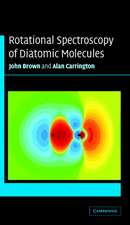Science and Technology of the Undercooled Melt: Rapid Solidification Materials and Technologies: NATO Science Series E:, cartea 114
Editat de P.R. Sahm, H. Jones, C.M. Adamen Limba Engleză Paperback – 13 oct 2011
Din seria NATO Science Series E:
- 24%
 Preț: 1570.70 lei
Preț: 1570.70 lei -
 Preț: 397.76 lei
Preț: 397.76 lei -
 Preț: 386.81 lei
Preț: 386.81 lei - 20%
 Preț: 346.24 lei
Preț: 346.24 lei -
 Preț: 424.33 lei
Preț: 424.33 lei - 18%
 Preț: 1224.18 lei
Preț: 1224.18 lei - 18%
 Preț: 1836.63 lei
Preț: 1836.63 lei - 18%
 Preț: 1229.28 lei
Preț: 1229.28 lei -
 Preț: 381.00 lei
Preț: 381.00 lei -
 Preț: 409.30 lei
Preț: 409.30 lei - 18%
 Preț: 1841.36 lei
Preț: 1841.36 lei - 5%
 Preț: 367.28 lei
Preț: 367.28 lei -
 Preț: 407.19 lei
Preț: 407.19 lei - 18%
 Preț: 1838.38 lei
Preț: 1838.38 lei -
 Preț: 420.28 lei
Preț: 420.28 lei -
 Preț: 399.29 lei
Preț: 399.29 lei -
 Preț: 398.74 lei
Preț: 398.74 lei - 18%
 Preț: 3026.13 lei
Preț: 3026.13 lei - 5%
 Preț: 391.06 lei
Preț: 391.06 lei - 18%
 Preț: 1228.62 lei
Preț: 1228.62 lei - 18%
 Preț: 1229.73 lei
Preț: 1229.73 lei - 18%
 Preț: 1234.46 lei
Preț: 1234.46 lei - 5%
 Preț: 3532.05 lei
Preț: 3532.05 lei - 18%
 Preț: 1840.11 lei
Preț: 1840.11 lei - 5%
 Preț: 378.80 lei
Preț: 378.80 lei - 18%
 Preț: 1227.84 lei
Preț: 1227.84 lei -
 Preț: 392.75 lei
Preț: 392.75 lei -
 Preț: 395.63 lei
Preț: 395.63 lei - 18%
 Preț: 2489.30 lei
Preț: 2489.30 lei - 5%
 Preț: 1429.27 lei
Preț: 1429.27 lei -
 Preț: 396.02 lei
Preț: 396.02 lei - 5%
 Preț: 2142.61 lei
Preț: 2142.61 lei - 18%
 Preț: 3049.16 lei
Preț: 3049.16 lei - 18%
 Preț: 1844.54 lei
Preț: 1844.54 lei -
 Preț: 403.53 lei
Preț: 403.53 lei
Preț: 388.90 lei
Nou
Puncte Express: 583
Preț estimativ în valută:
74.42€ • 78.25$ • 61.49£
74.42€ • 78.25$ • 61.49£
Carte tipărită la comandă
Livrare economică 17 aprilie-01 mai
Preluare comenzi: 021 569.72.76
Specificații
ISBN-13: 9789401084833
ISBN-10: 9401084831
Pagini: 308
Ilustrații: 304 p.
Dimensiuni: 155 x 235 x 16 mm
Greutate: 0.44 kg
Ediția:Softcover reprint of the original 1st ed. 1986
Editura: SPRINGER NETHERLANDS
Colecția Springer
Seria NATO Science Series E:
Locul publicării:Dordrecht, Netherlands
ISBN-10: 9401084831
Pagini: 308
Ilustrații: 304 p.
Dimensiuni: 155 x 235 x 16 mm
Greutate: 0.44 kg
Ediția:Softcover reprint of the original 1st ed. 1986
Editura: SPRINGER NETHERLANDS
Colecția Springer
Seria NATO Science Series E:
Locul publicării:Dordrecht, Netherlands
Public țintă
ResearchCuprins
A. Invited Papers and Summarized Discussions.- Fundamentals of Rapid Solidification.- Role of Nucleation in Rapid Solidification.- Thermodynamics in Rapid Solidification.- Formation and Stability of Metallic Glasses.- Microstructure Formation in Rapidly Solidified Alloys.- Magnetic and Superconducting Materials.- Rapid Solidification by Laser Beam Techniques.- Continuous Products in Rapid Solidification.- The Compaction of Rapidly Solidified Materials.- Production and Characterization of Rapidly-Solidified Particulates.- Rapid Solidification Technology: The Potential for Innovative Alloy Properties.- Engineering Properties and Applications of Rapidly Solidified Materials.- B. Poster Contributions.- Thermodynamic Aspects of Glass Formation in Ni-Zr Alloys.- Thermodynamics of Chemical Ordering and Glass-Transition in Liquid Mg-Sn Alloys.- Structural Criteria for Glass Forming Ability: Application to Aluminium-Based Alloys.- Effect of the Cooling Rate on the As-Cast Fraction Crystallized.- Solidification of Amorphous Pd77,5Si16,5Cu6 in a Drop Tube.- The Formation Kinetics of PdCuSi-and PdNiP-Metallic Glasses.- Crystallization Behaviour of Ni-Nb Amorphous Alloys: Comparison of Calorimetric Results and Homogeneous Nucleation - Growth Modelling.- Nucleation and Crystallization Kinetics in GeSe2 - Sb2Te3 Systems.- Direct Thermal Measurement of Adiabatic Dendritic Coarsening.- Microstructure of Melt-Spun Al-Mo Alloys.- Microstructure of Partially Crystalline Metallic Glasses.- Theory of Microstructural Development during Rapid Solidification.- RS Aluminium - Processing and Evaluation.- Computer Controlled Pyrometric Measurement of the Cooling Rate during Melt Spinning.- The Optimization of Amorphous Materials for Toroidal Transformer Cores.- C. Concluding Statement.- General Observations and Impressions.














